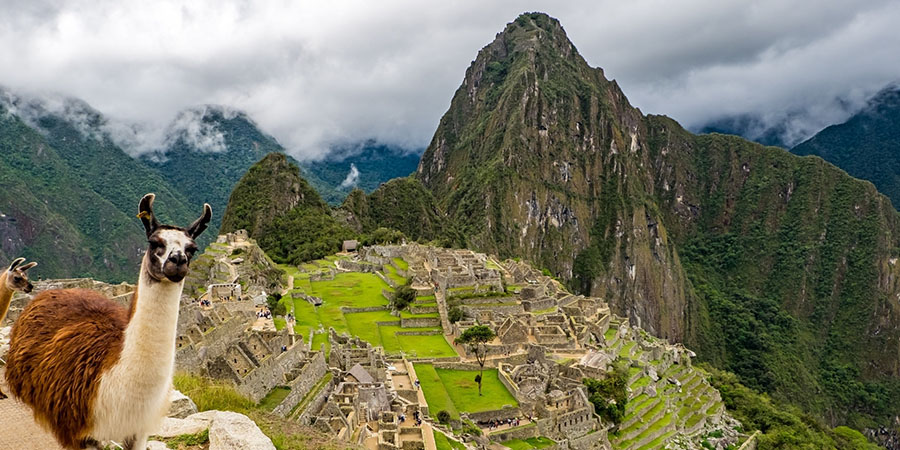$798$5,195

Peru, a country in South America, is a haven of rich cultural history, stunning natural beauty, and adventure. Known for its ancient Incan ruins, diverse landscapes, and vibrant cities, Peru offers a unique journey through its past civilizations and contemporary local life.
Geography and Climate
Peru is located on the western side of South America, facing the Pacific Ocean and bordered by Ecuador, Colombia, Brazil, Bolivia, and Chile. Its geography is incredibly diverse, ranging from the arid plains of the Pacific coast to the peaks of the Andes mountains and the tropical Amazon basin. The climate varies greatly depending on the region: the coast is generally arid and mild, the Andean region has a temperate mountain climate, and the Amazon is hot and humid.
Cultural Overview
Peru is a melting pot of indigenous and mestizo culture, with influences from its Inca past and Spanish colonial history. This blend is reflected in the country’s arts, music, festivals, and especially its cuisine. Peru’s traditions are deeply connected to its landscapes and history, with a strong sense of regional identity.
Key Destinations
- Lima – The capital city, known for its colonial architecture, vibrant food scene, and museums like the Larco Museum showcasing pre-Columbian art.
- Cusco – The historic capital of the Inca Empire, Cusco is a UNESCO World Heritage Site with a rich blend of Incan and Spanish colonial architecture and culture.
- Machu Picchu – The iconic 15th-century Inca citadel set high in the Andes Mountains is one of the New Seven Wonders of the World.
- The Sacred Valley – Just north of Cusco, this valley is filled with archaeological sites, traditional villages, and stunning landscapes.
- Lake Titicaca – The world’s highest navigable lake, shared with Bolivia, is known for its floating reed islands and traditional cultures.
- The Amazon Rainforest – One of the most biodiverse regions in the world, offering unique wildlife viewing and jungle experiences.
Archaeological Sites and History
Peru’s rich history can be explored through its numerous archaeological sites. Beyond Machu Picchu, important sites include the Nazca Lines, the ancient city of Chan Chan, and the fortress of Sacsayhuamán. These sites provide insight into the sophisticated civilizations that flourished in Peru long before the Spanish arrival.
Natural Beauty and Activities
The diverse landscapes of Peru offer a wide range of activities. Trekking the Inca Trail, exploring the Amazon rainforest, sandboarding in Huacachina, and bird watching in the Colca Canyon are just a few of the adventures that await.
Peruvian Cuisine
Peruvian cuisine is a fusion of indigenous, Spanish, African, Chinese, and Japanese influences. Staples include ceviche, lomo saltado, and cuy (guinea pig). Peru is also known for its variety of potatoes and grains like quinoa.
Music and Festivals
Peruvian music reflects a blend of traditional Andean, Spanish, and African rhythms. Festivals are a colorful display of this cultural diversity, with the Inti Raymi festival in Cusco and the Marinera festival in Trujillo being particularly noteworthy.
Best Time to Visit
The best time to visit Peru depends on the regions you plan to explore. For the coast, the summer months (December to March) are ideal, while the Andean highlands are best visited during the dry season (May to September). The Amazon rainforest can be visited year-round, though it’s wetter from December to May.
Cultural Etiquette
Peruvians are known for their warmth and hospitality. A handshake is a common greeting, and a more familiar cheek kiss may occur. Respect towards older people and traditional customs is expected.
Safety
While Peru is a relatively safe country for tourists, it’s advisable to take precautions in major cities against petty crime. When traveling in remote areas, always be aware of altitude sickness and take time to acclimatize.
Transportation
Peru has a comprehensive bus network that connects major cities and towns. Domestic flights are a quick way to travel long distances. In rural areas, transportation options may be more limited.
Accommodation
Peru offers a range of accommodations, from luxury hotels in major cities to lodges in the Amazon and basic hostels for budget travelers. In popular destinations like Cusco and Machu Picchu, booking in advance is recommended.
Shopping and Handicrafts
Peru is famous for its textiles, alpaca wool products, and handicrafts. Local markets and artisan shops are great places to buy authentic souvenirs.
Language
Spanish is the official language, with Quechua and Aymara also widely spoken, especially in the Andes and highlands.
Tips for Travelers
- Altitude sickness can be a concern in highland areas; acclimatize slowly and stay hydrated.
- Try the local cuisine, but be cautious with street food to avoid stomach issues.
- Always have some cash, as not all places accept credit cards, especially in remote areas.